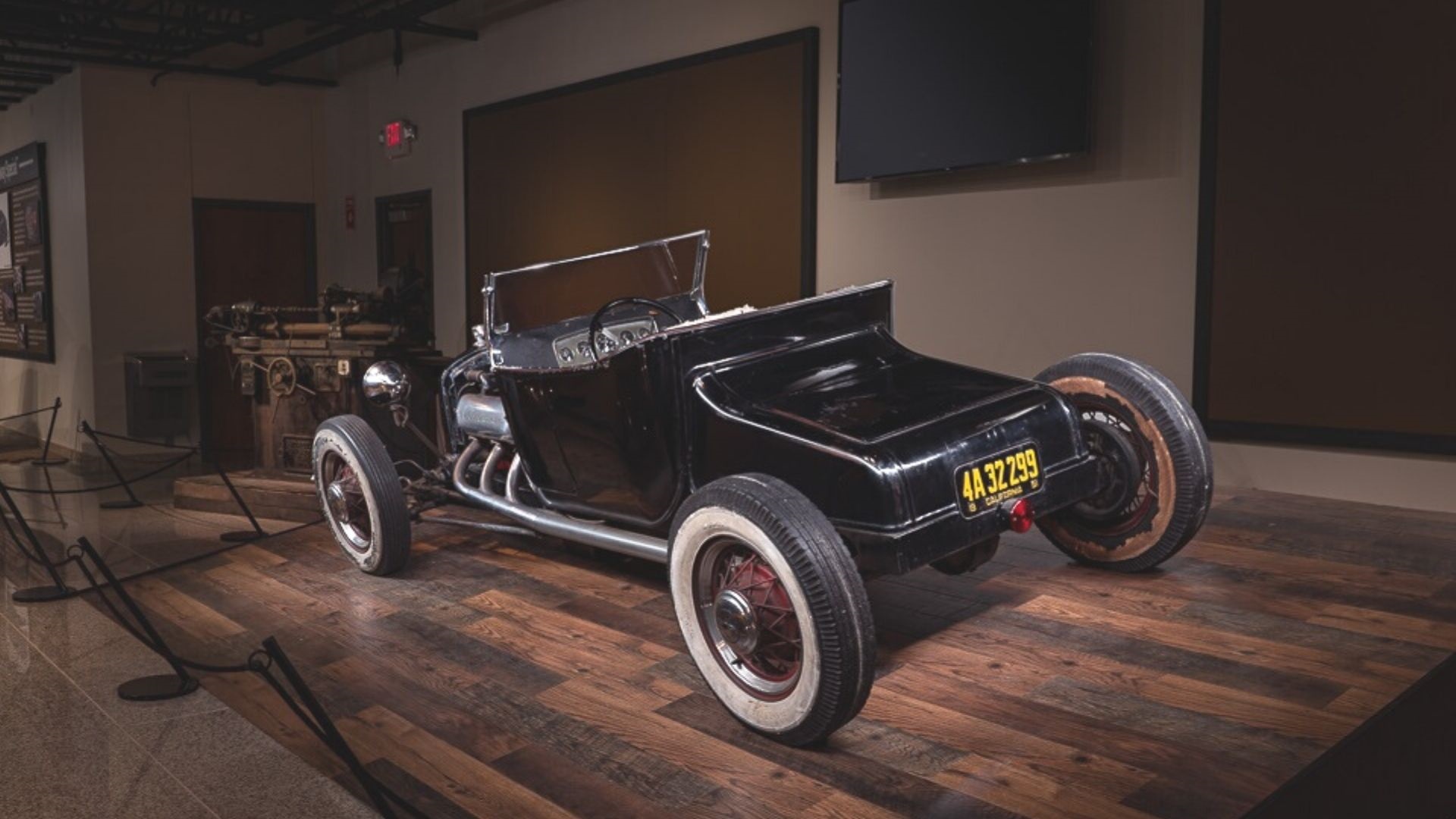

Two weeks ago, Conejo Valley Cars & Coffee named hometown legend Ed Iskenderian “Car Guy of the Century.” That title is not bestowed very often–it’s the first time for this particular enthusiast group–and it’s fitting for the founder of Isky Racing Cams, who will turn 100 in July. Iskenderian’s first hot rod, a Model T, now sits in a place of honor in the Speedway Motors Museum of American Speed in Lincoln, Nebraska.
“People always ask me why I’m so excited about this car,” museum curator Tim Matthews told me. “There are a lot of spectacular things in this museum, but if the cars in this museum were like baseball cards, this is like the Babe Ruth rookie card. It’s a car that belongs to a guy who helped form the industry and helped it grow as a hobby and an industry.”

This post is part of our ongoing museum series, which was created to bring the stories from museums around the world to The Drive readers. Check out our previous posts in the series about a restored 1921 Duesenberg Model A, a drag-racing 1937 Willys, and James Hetfield’s Art Deco hot rod.
Iskenderian said in an interview that back in the 30s, “you could buy a Model T for ten dollars, take it home, and take it apart.” Isky knows this from experience: he bought a Model T Ford on Essex frame rails from a buddy and swapped out the broken four-pot for a V8 from a 1932 Ford. It’s fitted with rare Maxi F cylinder heads and a custom-built manifold; my favorite part of the Model T is the flying skull hood ornament Iskanderian molded with his own hands in his high school shop class.
“He built the Isky back in the 30s when he was a boy, between 1936 and 1937,” Matthews says. “It was built before people really knew how to build hot rods. You couldn’t read in magazines now to do it. You couldn’t look it up on the internet. Back in those days, 100 miles per hour was cooking, and he drove it to 120, which was really something in the lake beds.”
In the genesis of hot rodding, the cars weren’t called hot rods, they were called gow jobs or soup jobs. Isky had heard around town that he needed to go to the Muroc lake bed, and he tinkered with his car to race. There weren’t any racing teams out there; it was more of a hobby. A fairly dangerous one, too, although it was safer (and certainly for pedestrians) than street racing.

“The Essex chassis was fitted with a ’32 Ford front axle using ’37 wishbones to mount the spring in front of the axle to lower the car,” Joe McCullough wrote for the Speedway Motors Museum of American Speed site. “The front brakes are not the Ford juice brakes that you might be expecting. Remarkably, the Ford factory was just switching from mechanical brakes to hydraulics as Isky was building his hot rod. Since those brand-new brakes were likely all but impossible to find in the junkyard, Ed used Plymouth hydraulics on the front. In the rear, the spring was mounted ahead of the Ford banjo axle to lengthen the wheelbase. Both ends use Houdaille shocks, fitted after a particularly rough road trip to Mexico in the T. Kelsey-Hayes wire wheels mount tires that date from sometime around WWII.”
After serving in the Army Air Corps during WWII, Isky returned to the dry lake beds in the post-war hot-rodding boom. He quickly discovered that the best way to get the best parts for his car was to start his own company and make them himself.
Isky’s Racing Cams was born with a single cam-grinding machine that he bought from renowned master cam grinder Ed Winfield. His fledgling company started selling cam shafts to friends and acquaintances who needed better equipment to race at the Bonneville Salt Flats, and before long, Isky stopped racing and decided his future was in providing parts for others. In those days, he thought five cams a day was a good living, Matthews says. Today, Iskenderian’s sons run the business, which still makes cam shafts and other racing parts.






The tinkerer and racer was known to be a self-starter, coming up with the industry’s first hard-face overlay camshafts as well as the first hydraulic racing camshafts, drop-in self-locking roller tappets, anti-pump-up hydraulic lifters, high-density chilled-iron lifters for drag racing, and high-RPM high-pressure valve springs. Isky was dubbed “The Camfather” by Don Garlits, the father of drag racing himself.
Over the years, word of Iskenderian’s brilliance spread, and he was tapped to provide technical support for NASCAR and the National Hot Rod Association (NHRA). He was also the first president of Speciality Equipment Market Association (SEMA), a performance and aftermarket organization, which he formed in 1963 with Vic Edelbrock, Jr., Roy Richter, Bob Hedman, Robert E. Wyman, John Bartlett, Phil Weiand Jr, Dean Moon, Al Segal, and Willie Garner.

Isky never changed the car from its racing days and he used it in all of his ads for his business, taking it out occasionally for a spin. Eventually, it ended up in the NHRA museum, where it was on display for 35 years. Only recently was it moved to the Speedway Motors’ museum, which specializes in racing vehicles.
“I think Ed is just amazed at where it has gone and how he has been able to be a part of it as it grew,” Matthews says. “He’s super excited that people are still interested in building cars and this hobby that never died. He told me that he was afraid someone was going to make fun of him because nobody really knew anything about it back then. He’s all smiles and loves talking about it today.”
Got a tip? Send the writer a note: kristin.shaw@thedrive.com